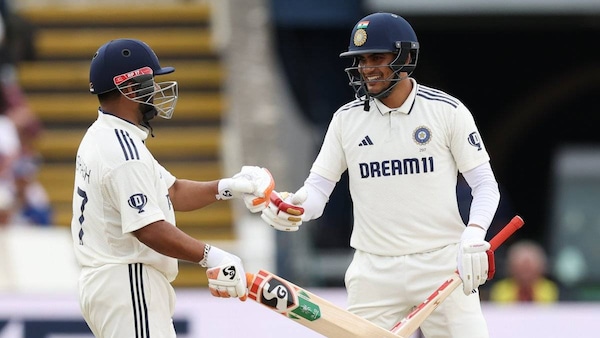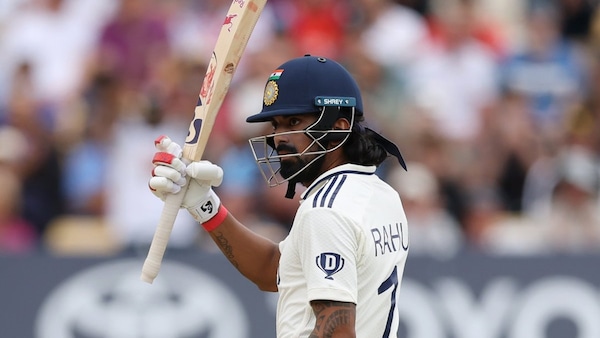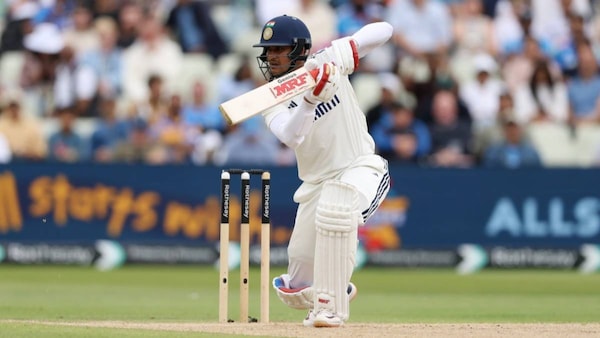IND vs ENG, 2nd Test, Day 4: Pant Turns Up The Heat As Gill Holds The Line
India piled on the lead at Edgbaston with controlled aggression and measured calm, writes Karan Pradhan.

Last Updated: 08.07 PM, Jul 05, 2025
Published during the lunch break in the UK, #MidMatchMemo delivers sharp analysis from the first session of play — and picks up where we left off the previous day.
***
EVERY GREAT TEST MATCH is built on strong narrative threads, subplots and individual battles, and this, the second Test of the Anderson-Tendulkar Trophy has been chock-full of all of those. Best of all and provided the match goes the distance, there are still five whole sessions of play left at Edgbaston. Having ended the third day on 64/1, India emerged on Saturday with a view to put on a defendable target quickly enough to give its bowlers enough time to bowl out England a second time.
While what exactly constitutes defendable against this Ben Stokes-led side on a pitch that isn’t exactly tricky remains to be seen, that India would want at least 100 overs to dismiss the opposition is clear. Picking up where they left off the previous evening, KL Rahul and Karun Nair started things off with cautious confidence before a spell of probing quick bowling by Brydon Carse resulted in the latter edging and being caught behind. Having wrapped up a tidy half century, Rahul joined Nair in the pavilion after succumbing to a peach by Josh Tongue and losing his middle stump. Soon after, came one of the match’s many ‘sliding doors’ moments and one that could possibly be the most important of them all. An impetuous Rishabh Pant arrived at the crease eager, as always and irrespective of the match state, to cause as much havoc as possible. Belting Tongue for a four and a six, it was off a Stokes ball that he decided to charge down the track and slap it over mid-off.

Except mid-off is about as far as it got, only for Zak Crawley to put down what can best be described as a clanger. If there was one chance that Sir Geoffrey Boycott would wager his mum could’ve taken, it was this one. But as it turned out, Pant enjoyed a reprieve when he had added a mere 11 runs to the Indian total. Chris Woakes would put down a half-chance when the Indian wicketkeeper was on 31. By lunch, he had posted an action-packed 41 off 35, handily outsourcing his captain in a partnership of 51 runs.
While Hurricane Pant raged at one end (at one point missing the ball completely and instead hurling his bat halfway to the boundary), Shubhman Gill cut a picture of patient and elegant serenity playing textbook strokes. That he could afford to be unhurried and calm had a lot to do with the chaos Pant brings to the game, not just on the field, but in the minds of opposition bowlers. This usually allows his batting partners to operate at their own pace and in their own zone. With a lead of 357 runs and seven wickets in hand at lunch, India will feel extremely optimistic about getting a good crack at the English batters before the day is over.

The discourse around Friday’s proceedings was largely focused on two key topics: England’s extremely strange first innings and India’s bowlers demonstrating that they can quickly get rid of the opposition tail. We’ll start with the first one and the scorecard makes for very curious reading. A total of six players were dismissed without, as the battered ol’ adage goes, troubling the scorers. Incidentally, and for the more statistically-inclined among you, six remains the record for highest number of ducks in a Test match innings, and this was the ninth time the dubious distinction was achieved.
Glance past those ducks on the scorecard though, and you’ll find Harry Brook’s 158 and Jamie Smith’s unbeaten 184. The next highest score after that duo came from Joe Root in the form of a 46-ball 22. And in case you’re still interested, Crawley and Extras (tied at 19) were the only other double-digit scorers for England. Back to the main event, and Brook and Smith put on a colossal 303 off 368 for the sixth wicket, seasoned with 38 fours and five sixes between them.

And for a while on the third day, as they were going hammer and tongs at the Indian bowlers, it did seem like 587 may prove to be far too small a score for India to harbour any lingering hopes of batting England out of the game. The hosts’ record-breaking chase in the first Test would probably have been at the back of Gill and Company’s minds as they returned to the field after a sobering second session — the first one that didn’t see a single wicket fall. And for a while, it seemed less about whether the hosts would get close to their opponents’ score, but how close they’d get, because the two batters resumed after tea in much the same mood as before.
That was until Akash Deep decided to have his say, and with the score on 387/5, bowled one of the balls of the match. Pitched on a length and seaming in, he broke through Brook’s defences and in so doing, forced opened the floodgates. The next 7.1 overs saw the addition of a mere 20 runs, but the loss of the remaining four wickets. Chris Woakes does have a ton to his name (against India no less) and Brydon Carse isn’t exactly a mug with the bat. Both possess the ability to stick around with numbers 10 and 11, and add useful runs at the end.

However, that was unlikely to happen with Mohammed Siraj making the second new ball talk (much as he did with the first one) and snuffing out the tail before it could do anything remotely close to wagging. The inability to shut down an innings after dismissing established batters has been a malaise that has followed Indian cricket around for years, if not decades. And while it doesn’t happen all the time, it always seems to happen at the most inconvenient times. Friday evening would’ve been a mighty inconvenient time for that to have happened.
Fortunately for India, Siraj had other ideas and bowled with vim, vigour and plenty of venom. He stuck to his line and length, and operated on a ‘you miss, I hit’ basis. There was nothing too fancy or unorthodox, just very accurate and fundamental ‘death overs’ bowling. His six-wicket haul will give him the confidence and swagger to add a bit more spice to an already interesting English summer. The Akash Deep-Siraj partnership seemed to come into its own in the first innings (the pair picked up all 10 wickets) and they’ll be hoping to revive that magic in the fourth innings, knowing full well how much the hosts love a good chase.
Karan Pradhan is editor-in-chief of Story Mode, a gaming and gaming-adjacent magazine. Follow him on X/Twitter @karanpradhan_
